£263 million investment and no public transport: will Wirral Waters’ Northbank go nowhere?
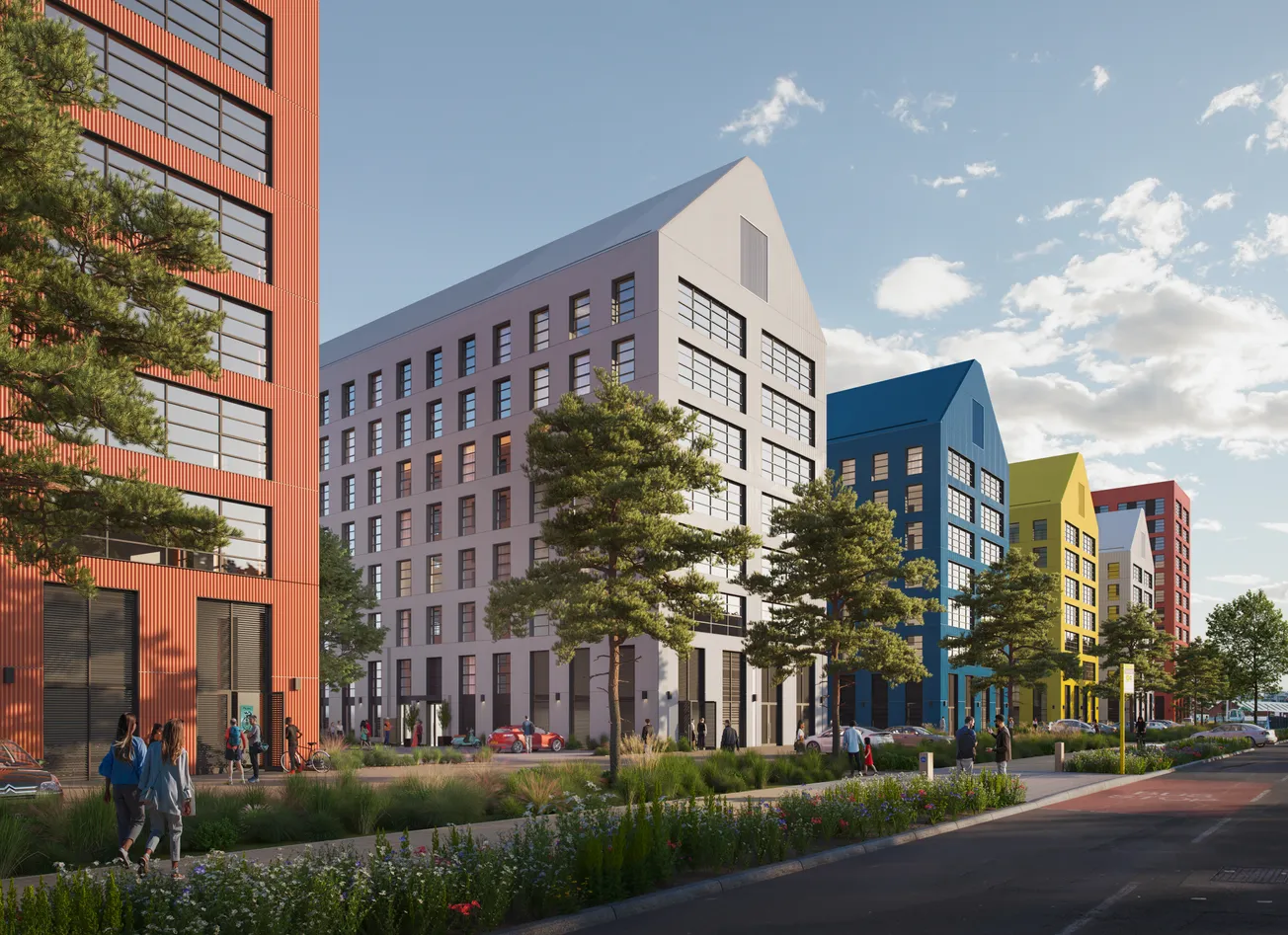
‘It’s not homes that make places. It’s shops and schools and jobs and gigs’
by David Lloyd
Remember that scene in Aliens where Ripley and crew touchdown on an outer world to find out why the terraformers aren’t returning their calls? It could easily have been shot in Wirral Waters. Land doesn’t get much more hinter than this sinewy waterway that tears Wallasey asunder from Birkenhead.
For the beleaguered first settlers of East Float Quay, life couldn’t have felt more isolated over these past 15 or so years. Like the residents of some Biosphere-like social experiment, they’ve been left undisturbed under their Victorian red-bricked cloche, occasionally sending out distress notes for pints of milk and Rizla packets. Now, as a reward, they’re faced with their share of a £2 million bill to fix the crumbling pediments.
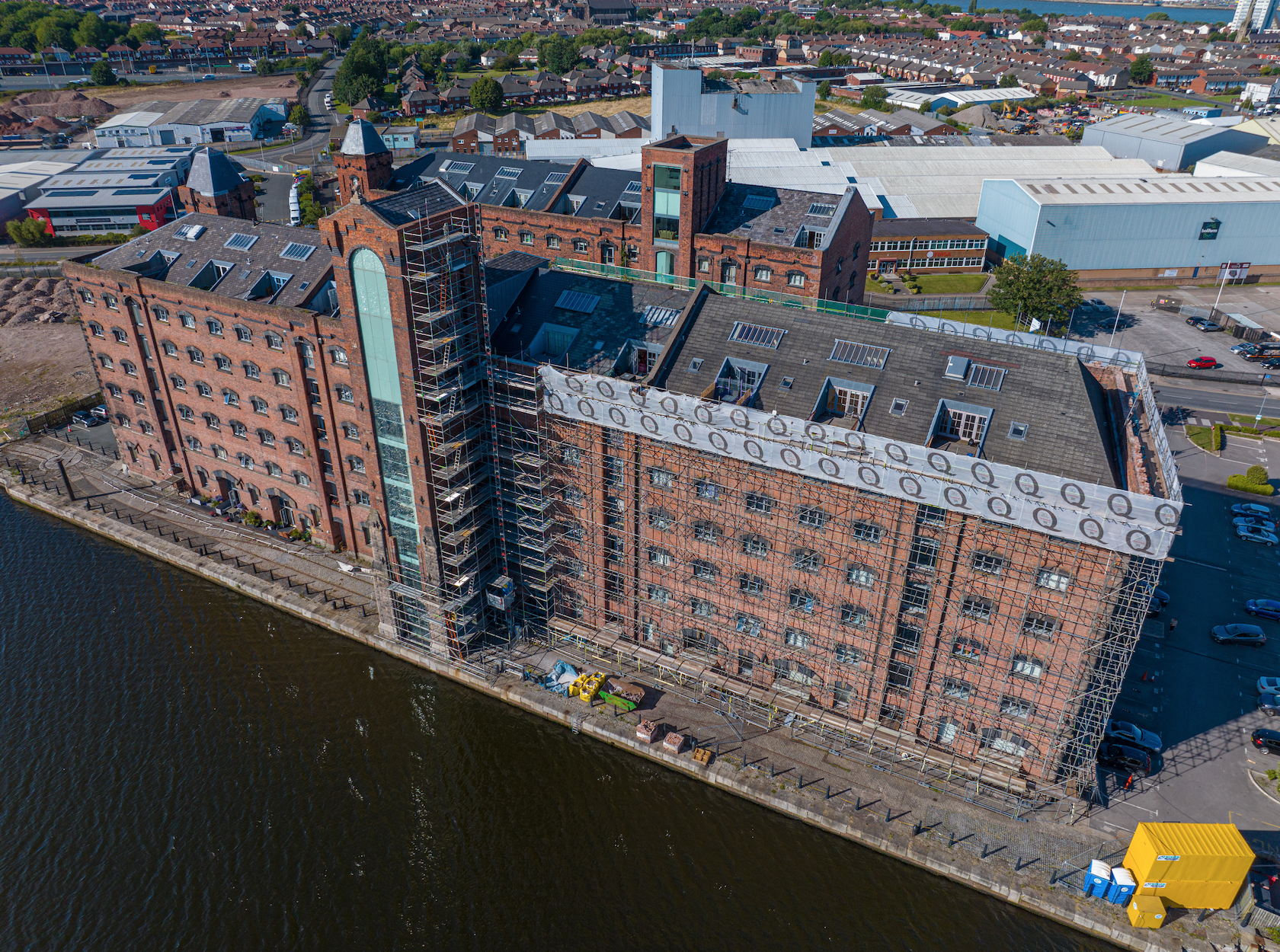
Life as a pioneer on the docksides of the Wirral hasn’t exactly been an object lesson in urban regeneration. It took longer to build the Empire State Building than it did for the council to fix the red bascule bridge that spans the dock system. And when it was finished, the local pub burned down. Hurrah!
Still, the residents’ isolation might well have been answered: at least if Peel’s latest round of artists’ impressions are anything to go by. Soon they’ll be joined by skateboarding teens and paddleboarding mums, as Wirral Waters’ Northbank project picks up pace.
In the next couple of years, the warehouses will form the centre of a new neighbourhood of 500 homes, a dementia care centre and a sprinkling of shops, cafes and ‘pocket’ parks, woven together by a new waterside promenade and kiddies’ playgrounds. Verily, it’ll look like one of those Jehovah’s Witness booklets. Maybe without the rhinos.
That is, of course, if you can keep the faith.
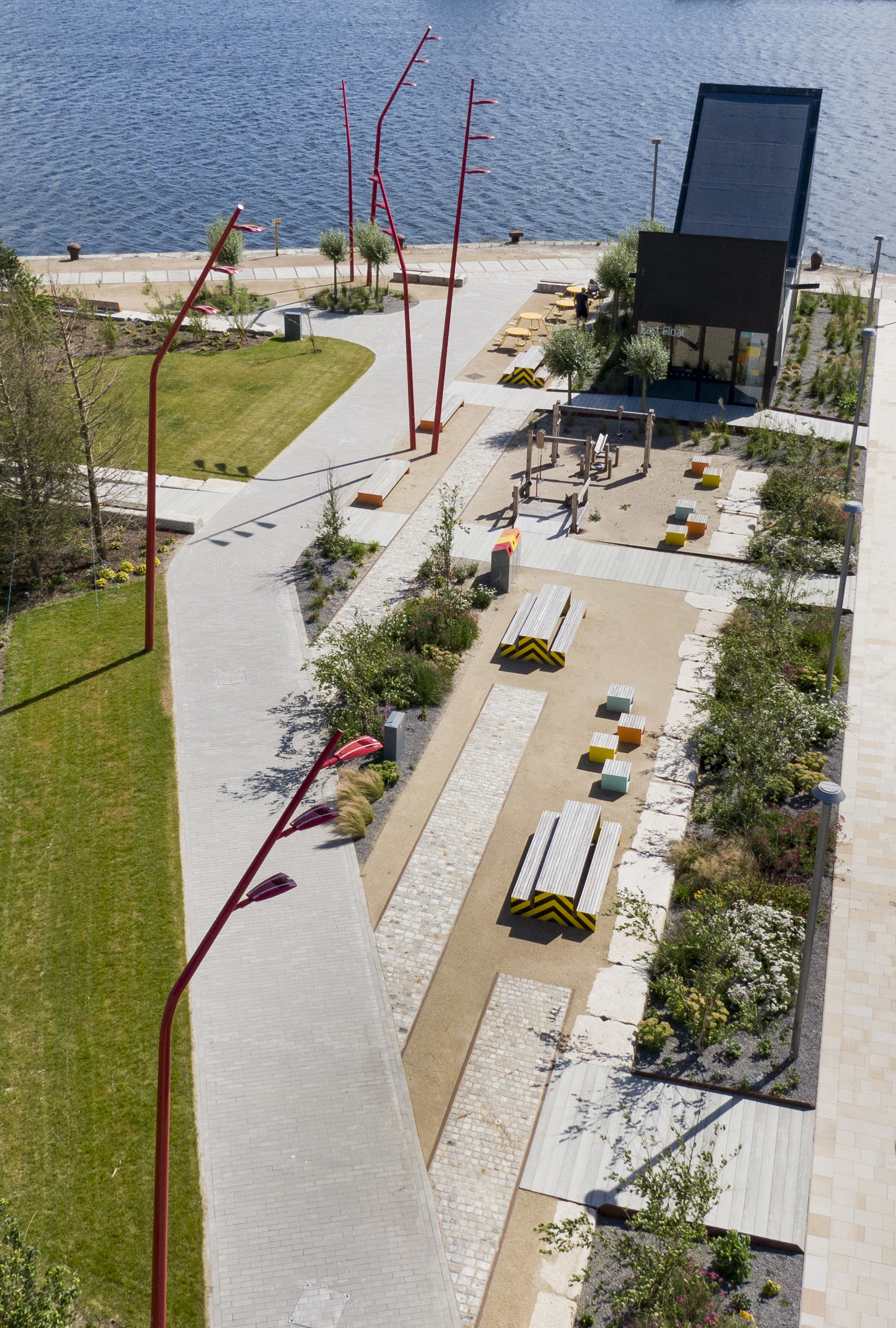
A muddy tributary that once bustled with stevedores and merchant seamen, Wirral’s Great Float dock system differs from the coastal docks in Liverpool. Like Hamburg’s or Rotterdam’s it burrows inland, taking advantage of Wallasey’s tidal pool, offering wharves and harbours along both banks.
Not that it needs so much space these days. That red bridge raises about twice a week, as cargo ships arrive to offload timber from Finland, or creaky old warships berth for a refit and forget to leave.
Peel’s plan? Spend £3 million to clean up a century-and-a-half’s worth of shit, and add a further £260 million to raise an entire new neighbourhood from the silt. Not quite Birkenhead, not really Wallasey: a halfway house that connects the two, and brings life back to the waterfront.
But it’s not been plain sailing so far…
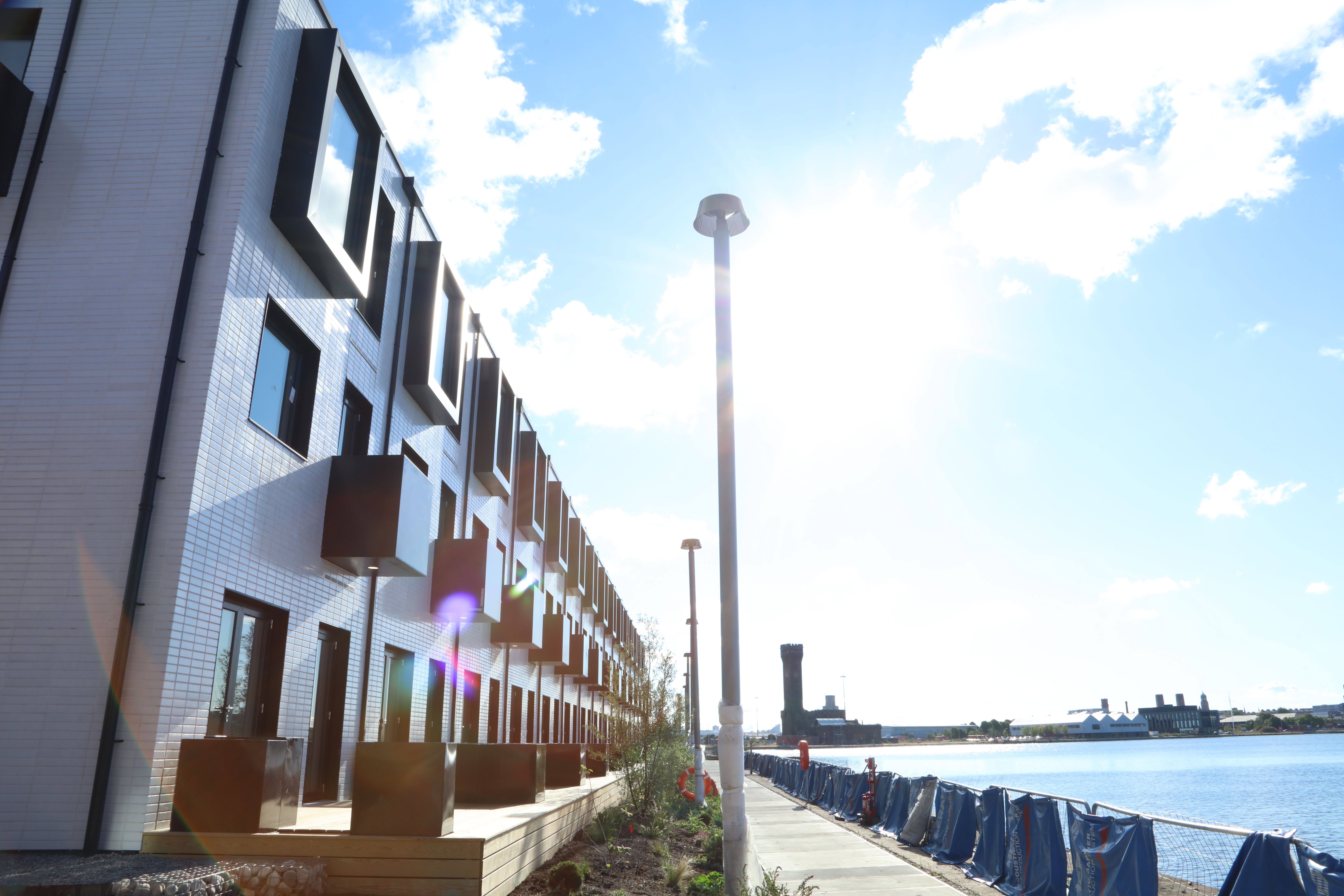
When it unveiled its Wirral Waters masterplan a decade ago, Peel showcased CGIs of gleaming, Dubai-like clusters of skyscrapers, a tram system linking the development up with Hamilton Square and the Merseyrail network, and a breathtakingly ambitious World Trade Centre with money from China.
The world’s moved on. Skyscrapers all look a little bit extra these days. But that’s ok, we’re all working from home and paddle boarding at the weekend anyway. And if you’ve tried to force a paddleboard into a lift you’ll know how popular it makes you with your neighbours.
So the scheme I’m being shown around, by Wirral Water’s head of press, James Dunningham, is a little more grounded, and a lot more deliverable. Quirky blocks of House by Urban Splash prefabs (designed by Liverpool’s shedkm architects before House went into administration because of a lack of orders) and tile-clad townhouses form the development’s streets and terraces. Here and there, cloister-like parks break up what is quite a dense and shadowy thicket of homes: and not a brick in sight.
“Everything is modular,” Dunningham says of the town houses and shipping container-aping ‘row houses’, raised, Jenga-like from the tarmac. “Wirral’s never seen anything like this before,” he says. It’s true. We haven’t.
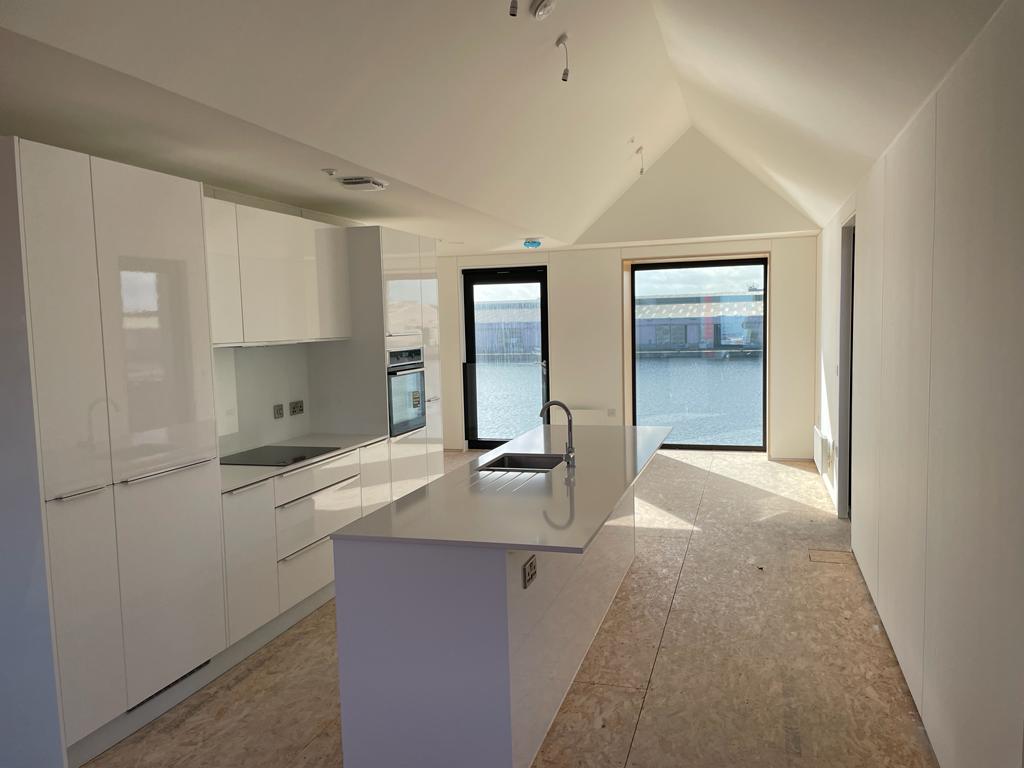
These are not roomy homes, but they’re tidy and ingeniously kitted out with clever little storage hidey holes and fitted appliances. I should be thinking pioneering waterside living. Instead, I can’t help but think ‘motorhome’.
The townhouse, at £300,000, features an island kitchen which is mostly island, such are the slim dimensions within. But that’s new housing for you, I guess. They do have amazing views over to Liverpool, and if you like stairs, you’re in for a treat. You get a lot more house for your money in New Brighton, and you can roll home from a real ale pub, and walk to a bakery for your bread, I suggest.
“Six have already been snapped up,” Dunningham says. “Some couples are moving back up from London, so £300,000 isn’t an issue for them,” he adds, while acknowledging that the price points aren’t a cinch for the area. “But the innovation is on another level,” he says of the flat pack frames, air source heat pumps and energy-saving insulation.
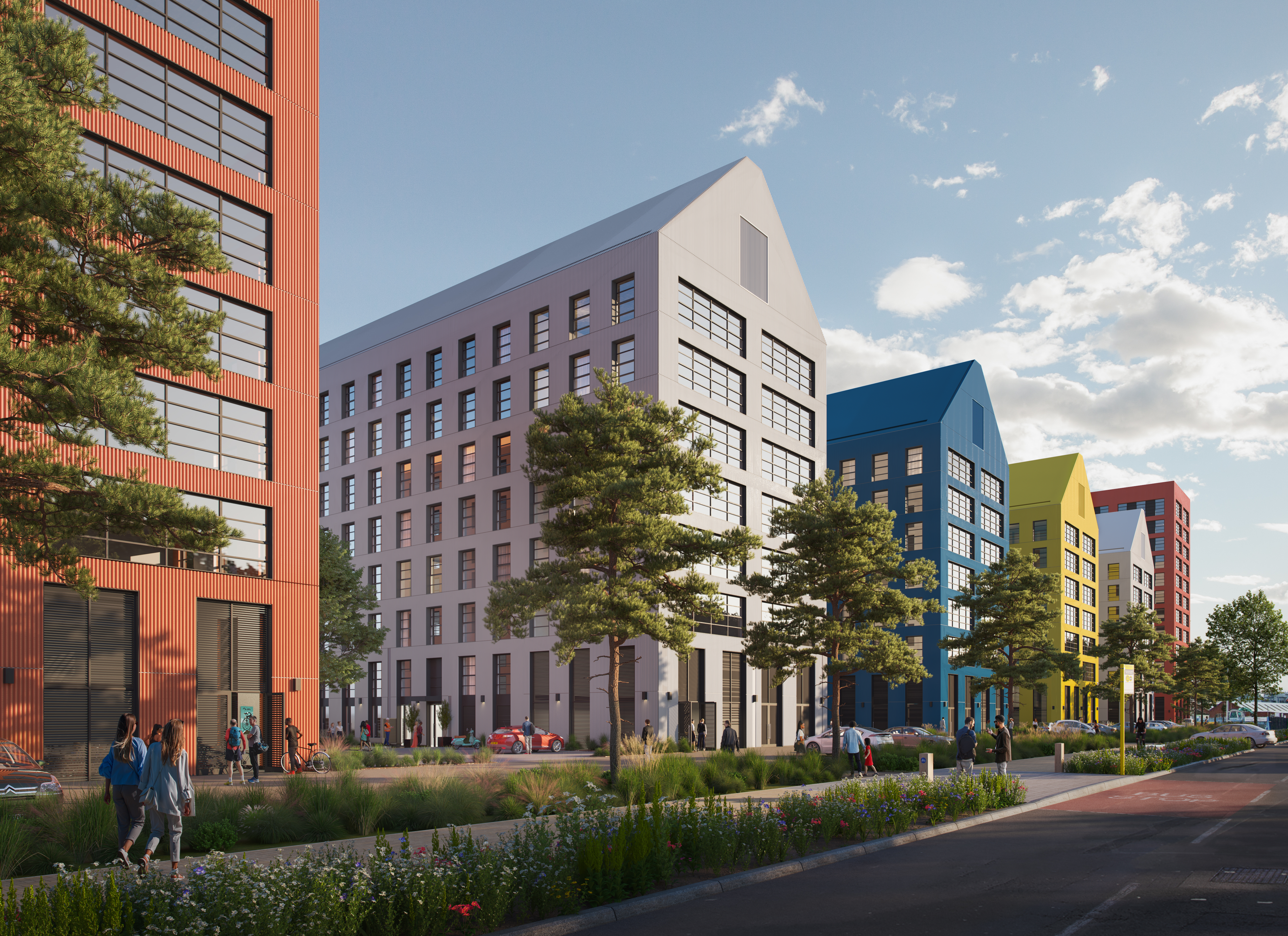
There are apartments, too: a jaunty row of brightly coloured blocks, gable-ends to the water, like a perfectly sharpened row of Crayola crayons. They’re ballsy. I like them. They feel like they belong here.
“We have to offer 20 percent of these at below market rates,” Dunningham says as three huge tower cranes lift concrete pillars and stairwells into place on the Miller’s Quay site at the far edge of the development.
“The skyscraper will still be built on the south bank,” says Dunningham as he takes me on a guided tour, “but it probably won’t be as big. Or as shiny.”
This is in addition to the award-winning technical college, from where the scheme’s site manager takes a healthy percentage of apprentices. At long last, the Florentine tower of the docks’ iconic hydraulic pumping station is getting scrubbed up too: soon it will be a £25 million Maritime Sciences hub. Make no mistake, things are getting serious.
It would be churlish to think of all of this as anything but a move in the right direction. It’s thrilling to see new — and audacious — housing stock take shape on this once polluted and unloved no man's land.
But there’s a catch.
Wirral isn’t short of houses. Good ones, too. Wallasey’s housing stock, in particular, is in good nick and relatively affordable. And Northbank, for all its chutzpah, is still Dock Road-adjacent. Its neighbours are light industrial warehouses, the storage drums of a molasses plant and salvage yards. Peel’s guiding principle, that this development remains open to all and not a gated community, is laudable. But the bigger aim, surely, is how to get people here in the first place?
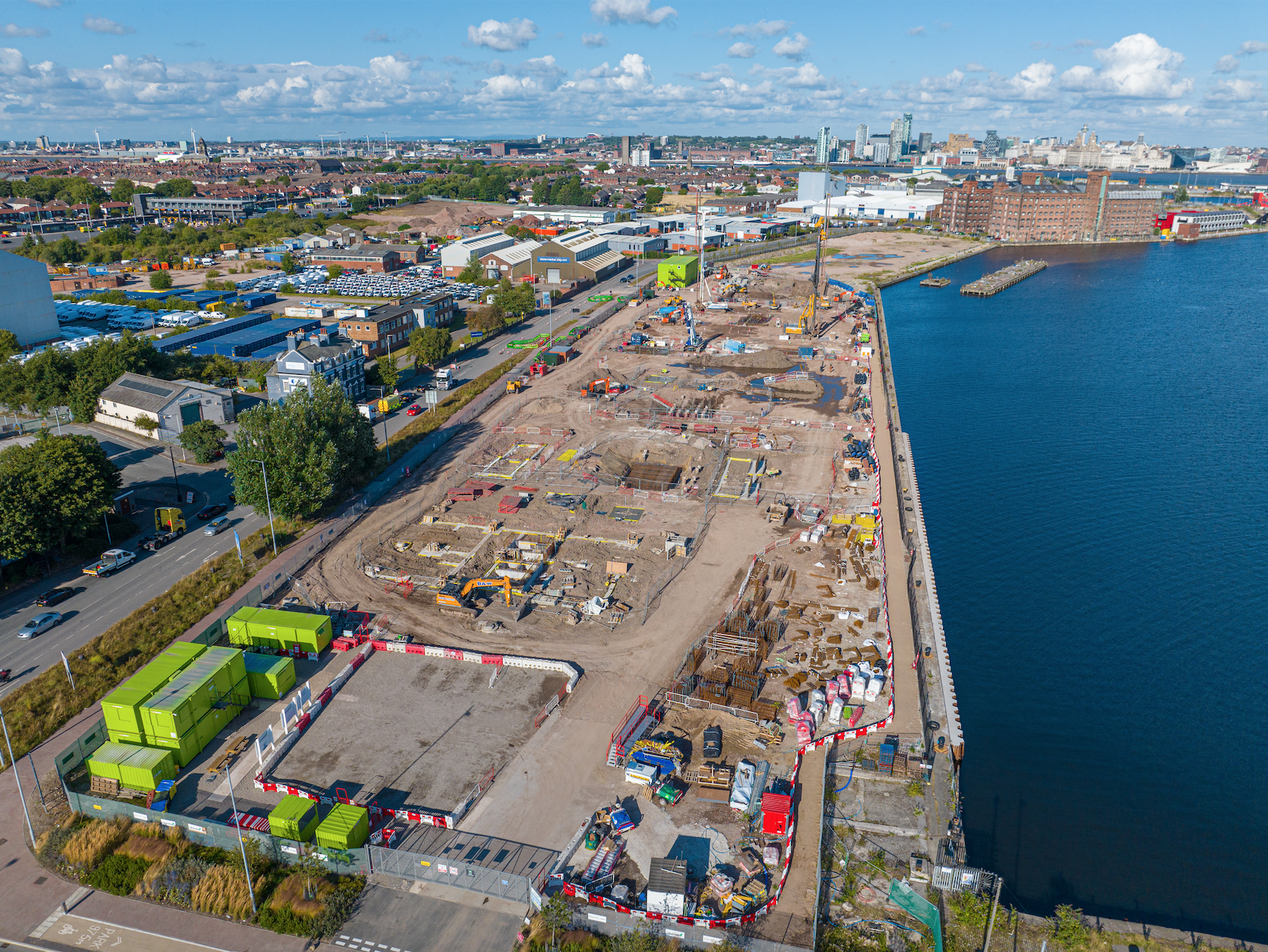
What Wirral’s short of, at least the Mersey-side of the peninsula, is a centre of gravity and decent public transport connections. And all the artists’ impressions in the world can’t magic them up.
South Liverpool is full. The bits that aren’t are so ridiculously expensive they make Eurovision Airbnb prices look like a steal. So you’d think that a waterside address less than a mile away from the Liver Buildings (ahem, Wirral) would be the next step. But it’s not, and I’m not sure Northbank will change that. It’s Crosby. And then it’s probably Birkdale. West Derby. Anywhere but here. And why? Because this place is so fractured and disparate even Wallasey doesn’t know what its town centre is.
Because it’s not homes that make places. It’s shops and schools and jobs and gigs. It’s the complete ecosystem of the 15 minute city (all hail Jane Jacobs) that Crosby and Allerton Road and Smithdown Road get right.
So how, away from the shiny red boxes and manicured lawns, does Peel intend to inject the area with a real, beating heart? A reason for us to love it?
“We need to fan the flames a bit more and connect all those dots up,” says Richard Mawdsley, Director for Development at Wirral Waters, “Port cities are in decline all over the world. Docks like this aren’t fit for purpose any more.”
“Our precedents for this are cities like Hamburg, Vancouver or even Bristol harbourside,” Mawdsley says, “they were in terminal decline too. But it takes time. Even Salford Quays took a good twenty years before it really bedded in. This is a place led, but jobs first plan,” he says, talking of the project’s next phase: business parks, maritime hubs and light industrial zones.
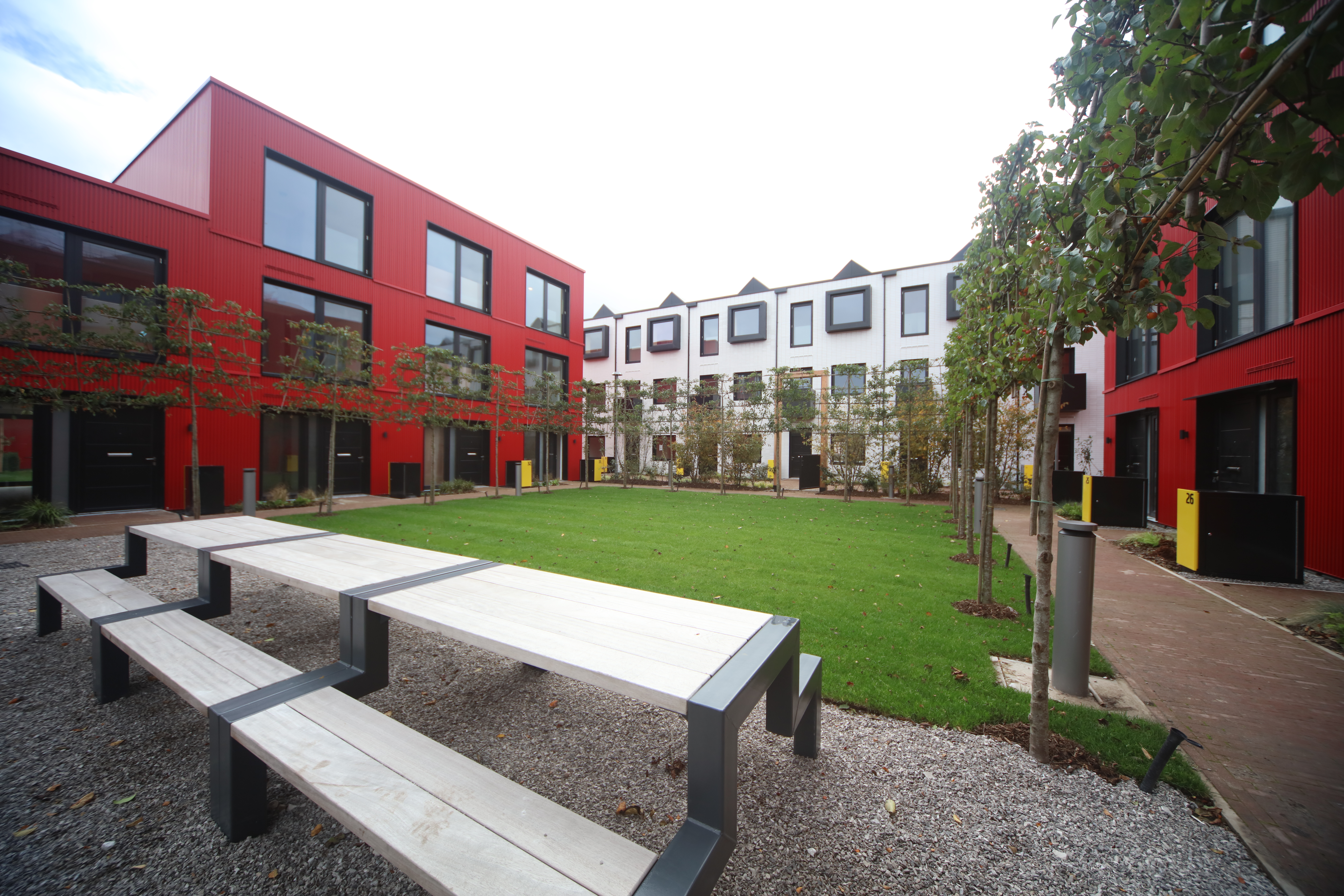
Salford Quays, of course, has trams. Northbank has a promenade, and water. It doesn’t even have a bus stop. Cars will still be king here, no matter how pretty that waterside cycle route is, it’s unlikely to be used by families returning from Aldi with their week’s groceries.
“That last mile connectivity is so important,” Dunningham says. “We have a duty to develop houses on brownfield sites, not car parks. We need to work harder to get that public transport infrastructure in place. Walking from here to Hamilton Square station in the dark on a rainy winter’s night just isn’t an option.”
Dunningham and Mawdsley talk a lot about active travel. So too does Wirral Council. But of course, talk is cheap. A decent train line for the east coast of the Wirral — like the good people of Hoylake and West Kirby enjoy — isn’t.
But the fact of the matter is, it's a sunny, warm October day. We’re all extolling the virtues of cycling and walking. But all three of us have come in our cars. And, look, here is Peel, on its own Wirral Waters website saying how conveniently placed the development is for the Mersey Tunnels.
“The council needs to up their game,” Dunningham says. “We don’t want it to become a car-led development. We’ve invested millions in public realm, trees, wildflowers and walkways. But people need public transport.”
As Mawdsley admits, Peel is playing the long game: “This is just the first part of a 20 to 30 year project,” he says. “Reimagining places like this takes time,” he says of the larger plan to encourage businesses here. They’ve made a start with Hythe, Wirral’s first A-grade office building for over a decade. It’s already home to a couple of pioneering made-in-Wirral SMEs: but there’s nowhere for them to grab a coffee, or have a breakout lunch meeting with visitors.
At least not yet.
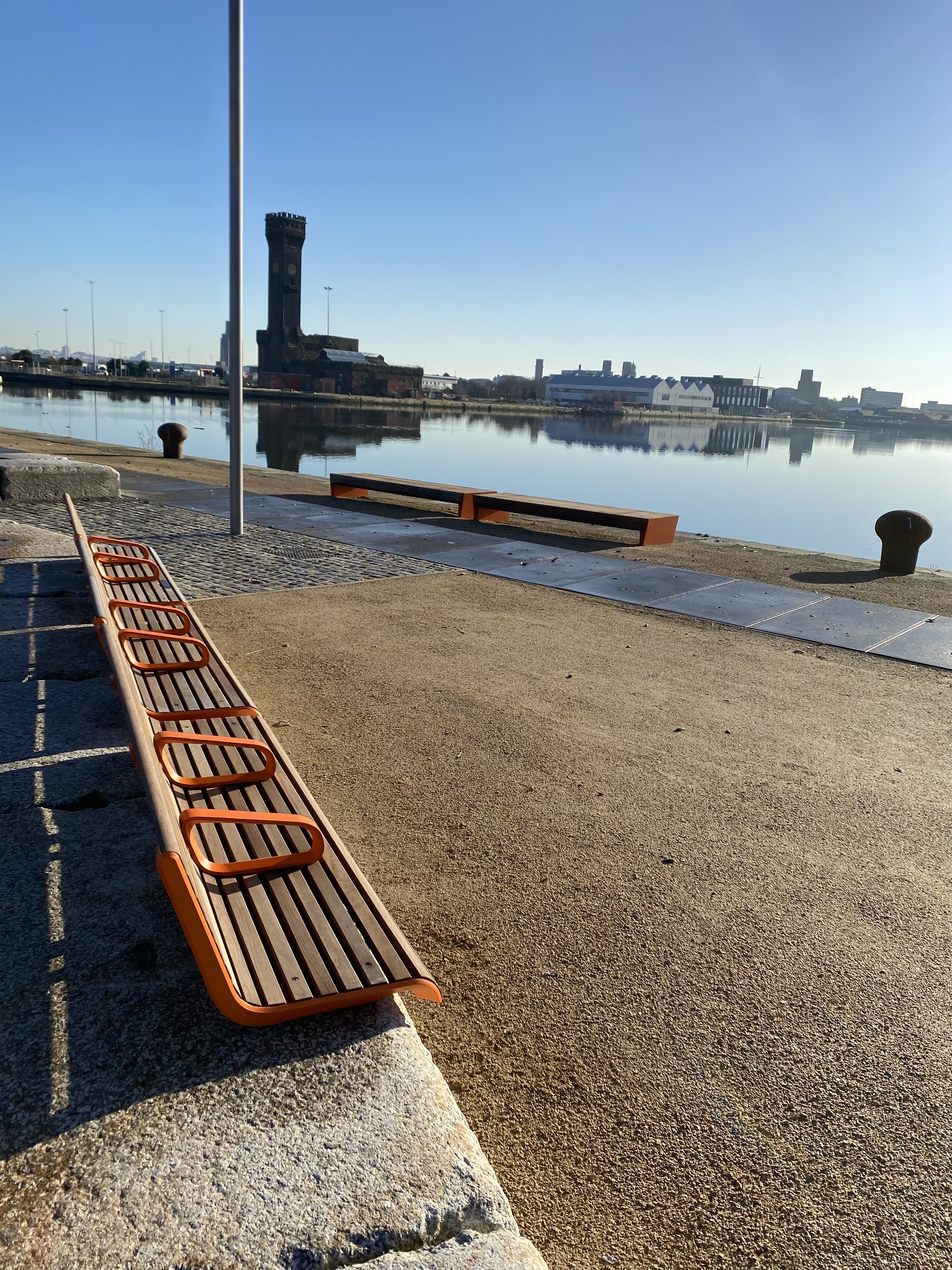
“We need to get employment to expand, diversify and grow. We need to encourage local organisations, and attract new ones, and we need to have more amenities, and local shops,” Mawdsley says. “We’ll always favour local shops over a Tesco Express,” he adds.
That’s a lot of promises for those brave early settlers to take on face value, I suggest.
“Yes, they will be pioneers,” Mawdsley says, “But Birkenhead is a pioneering place. You think this is brave? I tell you what was brave, William Laird’s grid plan for the new town of Birkenhead when Liverpool really was full. Building the world’s first municipal park, and the first tram system. That was brave. I really believe that DNA still exists on the Wirral.”
Birkenhead, huh? Sounds brilliant. How do I get there from here?
Looking out from the balcony of the townhouse over the huge, shimmering sheet of Great Float across the canopy of Birkenhead Park and over to the green ridge of Bidston Hill in one direction, and the hazy outline of the Pier Head and the Three Graces it's easy to see the appeal of this place, just like Laird did 200 years ago.
It’s not hard to buy into Peel’s vision of a new community, of infrastructure and industry. Start ups and settlers. College kids and kayakers.
But we’re not there yet. And just staring at the other side of the water and dreaming is never going to bring it any closer.

Comments
Latest
Losing local radio — and my mum
A place in the sun: How do a bankrupt charity boss and his councillor partner afford a “luxury” flat abroad?
Gritty, cheeky, sincere: How Martin Parr captured the spirit of Merseyside
Liverpool’s hospitality scene is changing. So why are we reluctant to shout about it?
£263 million investment and no public transport: will Wirral Waters’ Northbank go nowhere?
‘It’s not homes that make places. It’s shops and schools and jobs and gigs’